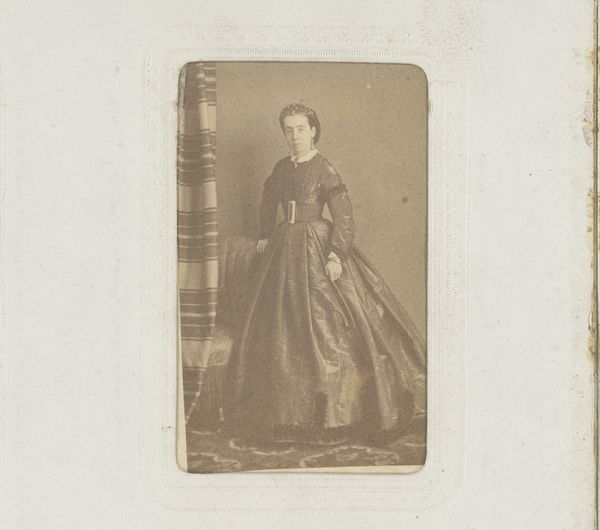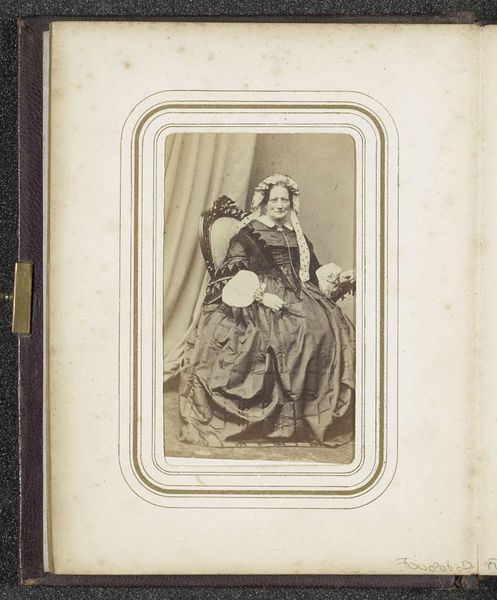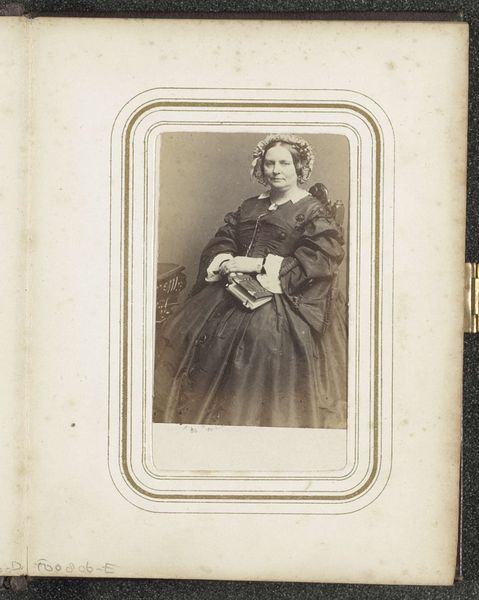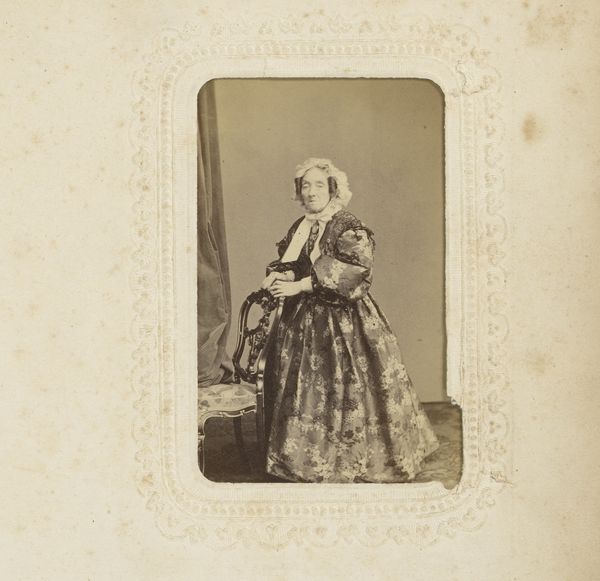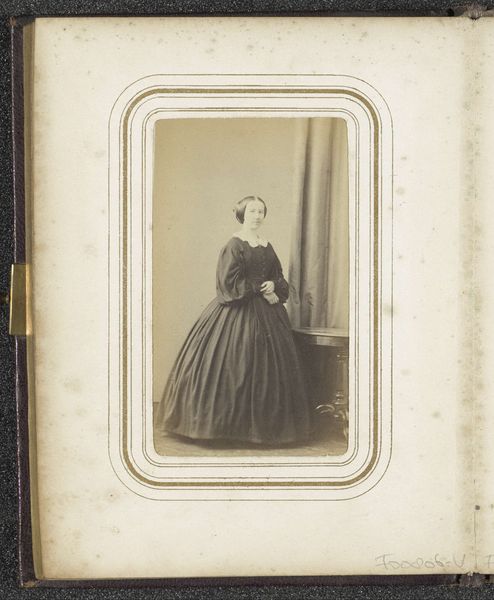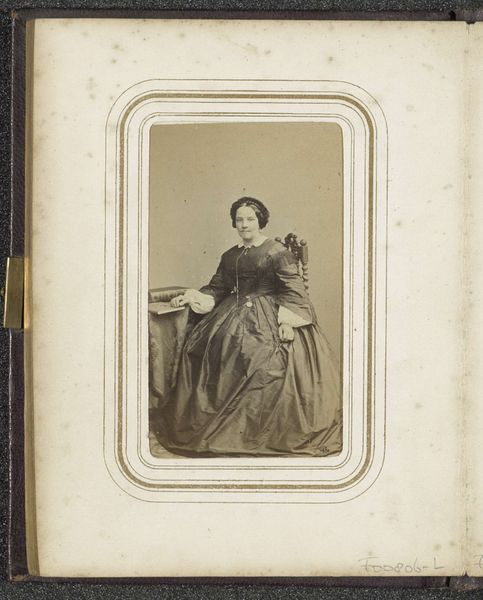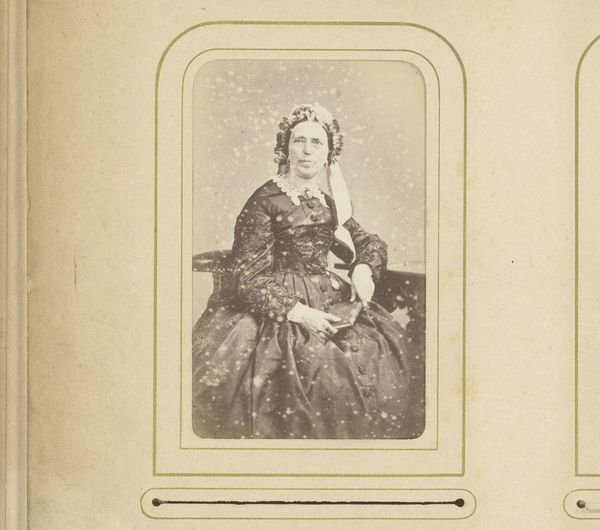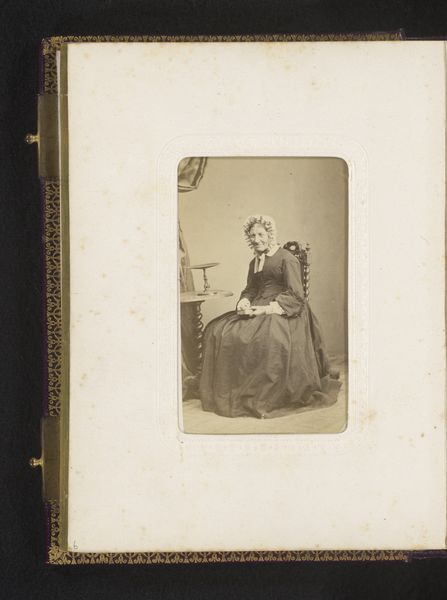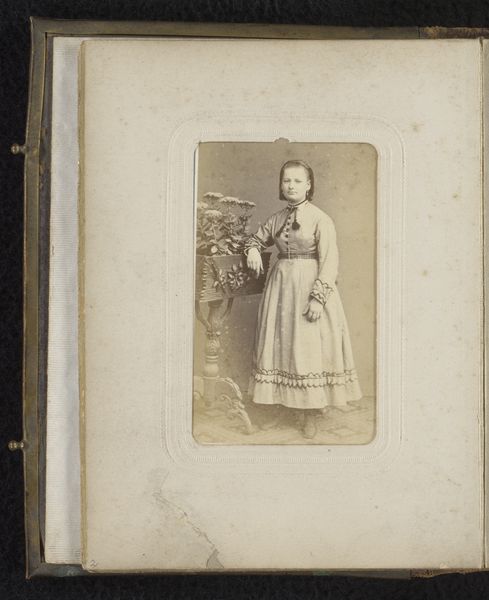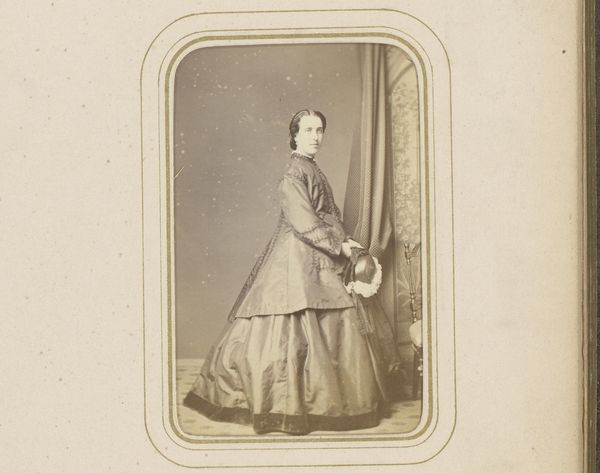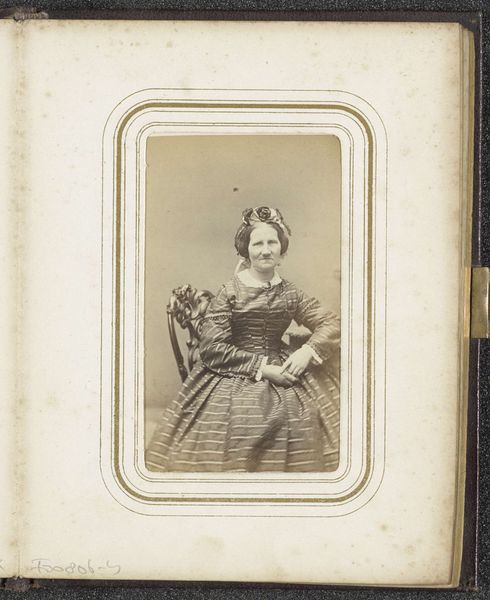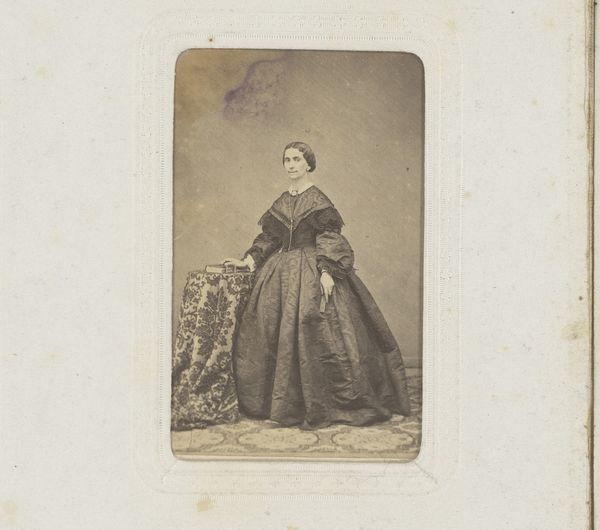
Portret van een zittende vrouw in een jurk met een muts c. 1860 - 1890
0:00
0:00
photography
#
portrait
#
photography
#
genre-painting
#
dress
Dimensions: height 87 mm, width 56 mm, height 104 mm, width 62 mm
Copyright: Rijks Museum: Open Domain
Editor: This is "Portret van een zittende vrouw in een jurk met een muts," a photographic portrait by Louis Wegner, dating from around 1860 to 1890. I'm immediately struck by the formality and the somewhat somber mood. What social factors might have shaped a piece like this? Curator: That's a crucial question. Photography in this period was becoming increasingly accessible, yet portraiture retained an air of significance. Consider the sitter's attire. The voluminous dress and delicate lace bonnet signify a certain level of economic comfort and adherence to societal expectations of feminine presentation. How do you think this image intersects with ideas of Victorian womanhood? Editor: I suppose it reflects the era's emphasis on domesticity and respectability. She seems posed and contained. Was there room for women to express themselves beyond these narrow constraints at that time? Curator: Absolutely. While the photograph presents a specific, perhaps idealized image, it's vital to remember that women’s experiences were diverse and complex. Photography itself was also becoming a tool for challenging social norms, allowing women to document their own lives and perspectives. Do you see any hints of agency in her gaze or posture, anything that might push back against those constraints? Editor: I think there’s something in her direct gaze that feels powerful. It hints at a will to be seen, not just as an object but as an individual. Maybe the seemingly formal pose could be read as asserting a form of control. Curator: Exactly! By engaging with the nuances of the photograph and situating it within the social history of the period, we can start to challenge simple, one-dimensional readings. Editor: It makes me think about the power of visual representation, who controls it, and what stories are told and not told through images like this. Curator: Precisely. Thinking critically about the layers of identity, gender, and class that photography engages with offers great perspective on that period, and it is so relevant today.
Comments
No comments
Be the first to comment and join the conversation on the ultimate creative platform.
